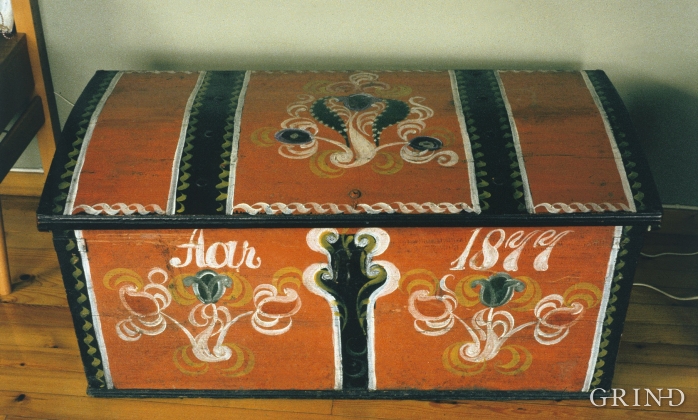Published: 30.09.2015 | Author: Nils Georg Brekke, Randi Andersen
The Ostra chests are easily recognisable with their characteristic style. (Nils Georg Brekke)
Around Mjøsvågen here is still a compact marine use area. Some of the buildings are common boathouses, but most of them also house small enterprises and workshops. This is where the farmers from Øvsthus, Mjøs, Hole and other farms have supplemented their meagre incomes as smiths, brass moulders, clog makers, chest builders and decorative painters.
Around 1865 was the time when they started making chests for sale for the cellar merchants in Bergen. Jon Larsson Bjørneset Mjøs (1825-1913) was originally a smith, but he built himself a house in Mjøsvågen and started chest production. He did well and built another house, with one room for joinery and one for fittings and painting. By and by fine chest workshops were established in Mjøsvågen. Amongst the younger ones was Lars L.Mjøs, known for his skilful painting. The brothers Fuse and Halldor Hole had steady deliveries to the merchant Ole Bratland in Blaauwhopen by Muren in Bergen. In Lonevåg there was also a large production of “Ostra chests”, and when sales of decorative chests declined at the turn of the century, they changed their production to travelling chests, with curved lids; often called “America chests”.
Further up by the Hole river the brass moulders, or braziers, had their workshops – another semi-industrial craft speciality. The old smithy by the Hole River carried out casting in open moulds right up to the 1970s. Innermost in the Mjøsvågen mechanical workshops were gradually established, which are still in full operation.
- Vik, B. V. (1986) Kistekallane kring Mjøsvågen. I: Osterøy i soge og samtid, s. 34-39.




